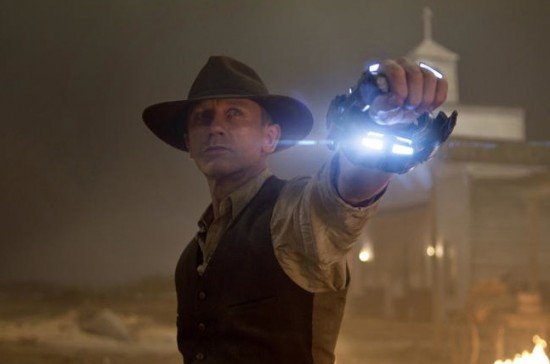
Catching up. That’s what I’m doing this weekend. In the place where I spent my vacation, the net connection was too slow for video-watching, so much of my catching up involves watching videos I wanted to see over the last 10 days but couldn’t. A slew of them were featured on a web site called TYWKIWDBI. It’s an absolutely awesome site, even though it’s got nothing to do with metal music. I don’t have the time to browse that site every day, but without fail, whenever I do, I find fascinating shit.
I hadn’t planned on adding any more NCS posts today, but I couldn’t resist sharing with you this collection of items I found on TYWKIWDBI over the last week. All but one of the items are videos — and all of them fit the profile of this NCS series — things that are fucking metal, even though they’re not music.
So, after the jump, we have for you a trailer about a forthcoming movie that looks awesome, a video of a parotta-maker which proves that practice does make perfect, some eye-popping images of an opium factory from 160 years ago, and a final, very eloquent video about you and me and our connection to the cosmos. (all these rip-offs from TYWKIWDBI, plus some of our own embellishments, after the jump . . .)
COWBOYS AND ALIENS!
Fuck yeah! What could be better than cowboys and aliens? How about a movie about cowboys and aliens? How about a movie about cowboys and aliens starring Daniel Craig, Harrison Ford, Sam Rockwell, and the very hot Olivia Wilde (from the TV show, House), directed by Jon Favreau (Iron Man), produced by Ron Howard and Brian Grazer, with Steven Spielberg as the executive producer?
And on top of all that, it doesn’t appear to be a Men In Black-style comedy, but a straight-faced action movie. The only disappointment is that it won’t be released until the summer of 2011. We hate waiting. Here’s the trailer. It’s fucking metal. (For more info, the movie’s official site is here.)
PRACTICE MAKES PERFECT
Parotta is an Indian flatbread popular in the southern part of the sub-continent. According to The Font of All Human Knowledge, “it is prepared with Maida and Oil/Ghee by beating the mixture into thin layers and later forming a round bread with the thin layers.” This very short video shows a man in a restaurant pounding the dough flat and throwing the pieces of parotta to the cook, who slaps it on a hot flat iron for cooking. Keep your eyes open for the waiter who strolls through the air space of the flying dough.
We admire anyone who’s really good at what they do — pretty much regardless of what it is. This, we think, is fucking metal.
OLD SCHOOL OPIUM-STACKING
There’s a place in London called The Wellcome Collection, which appears to be a type of exhibition hall, free to visitors, that explores the connections between medicine, life and art in the past, present and future. Currently featured at The Wellcome Collection is an exhibition called “High Society”, which explores the history of mind-altering drugs. The web site for that exhibition includes numerous interesting images, including the two we’re showing you below.
They’re from a series of lithographs by W. S. Sherwill showing an opium factory in Patna, India, in about 1850. The prints show the different stages in the processing of opium at the factory in Patna, which was the centrer of the British East India Company’s opium plantations in Bengal. The raw opium was formed into a ball about 3½ pounds in weight and wrapped in poppy petals to protect it from damage.
The balls were then dried on shelves and boxed into chests each containing 25-40 balls before shipping to China and Europe. The first image below is the “stacking room” and the bottom image is the “drying room.” People in the mid-1800s obviously smoked a lot of fucking opium. We’re not trying to praise or glorify drug use — though we don’t mind it either. Good or bad, we think the scale of this opium operation is fucking metal.


“I STEPPED OUT OF A SUPERNOVA . . . AND SO DID YOU”
The video below will take 4:45 of your time. In our most humble opinion, it’s 4:45 well-spent. It’s a meditation on the cosmos, and the connection between each of us and the vast star-field in which we live. There may not be any science in it that’s new to you (though there might be), but the narration is fucking metal. And so are the ideas it expresses. Check it out:
********
That’s all we’ve got for this installment of THAT’S METAL!. Enjoy the rest of your fucking Saturday.

4:45 well spent indeed. Great video
Thanks! And good to see you back at DMB.
What could be better than cowboys facing off aliens, you ask? How bout cowboys facing ninjas?
http://www.youtube.com/watch?v=0Z8xYMomsDc
Oh hell yes! That looks awesome — and we only have to wait until December to see it. Thanks for that tip.
I’ll see your ninja and raise you some samurai….
And Takashi miike.
http://www.youtube.com/watch?v=nluPs-nGngk
Hot damn! Have you seen this movie??
Yes!!! It’s a few years old, so you should have no trouble finding it…
Looks pretty sweet. I may have to add this to my collection after I get the Tetsuo movies – which are most definitely metal, in more ways than one.
Not bad, but you’re actually peering into the past, not the future. Now, scientists are getting to watch an extragalactic supernova as it happens (instead of seeing the remnants), although it occurred millions of years ago, with it now being visible to us (or our instruments). What Kepler saw was after the fact. What Muslims and Chinese saw before that was the same. Stuff that happened long before civilization was around.
Personally, I think the concept of infinity is flawed (as well as some other things), but viewing a supernova from another galaxy is still something to think about in regards to time and distance. How many galaxies are in between ours and where the supernova is located? Has anyone (or anything) else seen it, and when?
This is one of the concepts mentioned in the video that, no matter how many times I hear or read about it, still blows my mind: that because even light takes almost unimaginable amounts of time to travel such truly unimaginable distances, what we see in the night sky are images that in many instances pre-date the existence of our solar system.
Your last question is another one that blows my mind to consider: “viewing a supernova from another galaxy . . . How many galaxies are in between ours and where the supernova is located? Has anyone (or anything) else seen it, and when?”
Mind if I bend things a little further?
Who says there has to have been anyone/anything in between. The extragalactic supernova I’m talking about is around 88 million light years away. So, imagine somewhere 160-170 million light years away and they’re just seeing the supernova for the first time. Or perhaps someone about the same distance away, but in a different direction. They’d all be seeing something different. Stars may appear as points of light, but nebula, supernova , clusters and galaxies are likely going to look different – although that depends on distance and relative angle.
There are supernovae that have been seen (or rather, the remnants of them) that occurred over 4 billion years ago (two in the last decade are in this range). And there have probably been many more, young and old, that have gone unnoticed or unrecognized.
People like to say that as humans, we’re insignificant. I think they’re wrong. We have the capability to ponder stuff that’s beyond our knowledge. For a mere speck of dust on the grand cosmic scale, that’s more than enough.
This makes my head hurt — but in a good way. It also set me to poking around some more, and I found this from a news article that appeared just last month: “Astronomers have discovered the oldest and most distant object in the universe – a galaxy so far away that its light has taken 13.1 billion years to reach the Earth. The galaxy, which was spotted by Europe’s Very Large Telescope in Chile, is the most remote cluster of stars, gas and dust ever measured. It is so distant, scientists are observing it when the universe was in its infancy – aged just 600 million years old, or four per cent of its present age.”
The article is here:
http://www.dailymail.co.uk/sciencetech/article-1322166/UDFy-38135539-galaxy-13-billion-light-years-away-astronomers.html
Perhaps it’s one of the oldest, but is it the furthest away?
From what that article states, it’s not really clear whether the galaxy has remained there since its formation (relatively speaking) or if it’s simply moved the furthest away from the “center” of the universe (or where it formed, which is probably more accurate to say). If it’s near its origins, that could place other galaxies another 13-14 billion light years from that – although I doubt that things are like an ever expanding bubble in all directions or even a puddle.
Ah, the problems of dealing with stuff we are seeing millions/billions of years later.
I guess it depends on how fast things were traveling away from the origin point of the big bang. This galaxy is the most remote yet observed — and therefore the oldest, since distance correlates with time. One would think there are other celestial objects even farther from us, and therefore older still, but we just don’t yet have the technology to see them. And maybe we never will, since the article says that in the relative infancy of the universe, space was filled with a hydrogen fog that makes observation of even galactic-sized objects extremely difficult. Plus, the article says that stars and galaxies didn’t start to form until 300 million years after the Big Bang. Since this newly discovered galaxy is “only” 600 million years old, even if we could see another 300 million light years farther away, we would then see . . . nothing at all.
Not necessarily. If this galaxy is somewhere (on a universal scale) near its origins, there could be galaxies on the other “side” of it, with some of the furthest just now being able to see it. But this is assuming that it’s not one of the last galaxies as you travel linearly, which shouldn’t be taken as an indicator of age. True, it could be on the outskirts of the galaxy, the rural part of our universe if you will, but I wouldn’t be so quick to put up a last gas for eternity sign in the vicinity.
While I may not be a scientist and only have a feeble grasp at some of this stuff, I think it’s safe to say that people really haven’t figured out just how old the universe is, how and where it began. Evidence may suggest certain things, but that’s not to say it’s the whole picture. Maybe this distant galaxy isn’t one of the oldest and maybe it’s only halfway out from wherever everything began. We’re just now able to detect it, there could be more out there that simply hasn’t had enough time to reach us. Maybe it’s at the heart of the universe and we’re just in the way. Who knows? Galaxies don’t even travel at the same rate and I have my doubts about certain other things involved.
To your last thought: even assuming a 300 million year gestation period, there’d still be something there, even if we can’t really see it. Sure, maybe there weren’t stars or galaxies then, but it’s not like the universe was an absolute void at that point either. Just a kind of turbulent soup of stray matter and energy that eventually learned to crawl and form stuff. I think peering into anything that doesn’t exist and never has (a true void) is impossible, so even if we were to skip another 300 million years or so to take a look, you’d still find something. But beyond that, I think something similar to Heisenberg’s Uncertainty Principle comes into play (and why I think that the acceptance of the vacuum of space isn’t quite right either), to see it means that something there – or that it was there.
With that, I think it’s time for some trippy and/or spacey metal. Tool, Miosis, Mytra. Hell, even some Gordian Knot might fit well.
You’ve hit on something else that was making my head hurt last night — where, in relation to the current position of our galaxy and of Sol in particular, did the Big Bang happen? If all of the most distant objects we can see are moving away from us (which seems to be the case), then that would suggest we’re in the vicinity of the Origin point. But that would really be an amazing coincidence. And yeah, you’re right that there would be something in that last 300 million light years of distance beyond that galaxy identified last month, even if all the superhot matter hadn’t yet formed into stars or galaxies.. I knew I shouldn’t have used the word “nothing” as soon as I wrote it.
The Heisenberg Uncertainty Principle? How about throwing quantum physics into the mix and ideas about multiverses, or the notion that the Big Bang has happened more than once?
Well, I do need to study some more on certain matters before I continue with some of the stuff I was writing – some for fiction, some for other uses. But for simplicity’s sake, a 13.75 billion year old universe should, in theory, span approximately 27.4 Billion light years. However, scientists believe that space has expanded, with the extremities out to 93 Billion light years. The curve of spacetime is used to explain this, since by obeying the speed of light (to which I’ve never agreed with the notion that it’s that absolute limit), such a distance in impossible. Unlike popular views, I don’t think it’s spherical, nor do I think it’s similar to how spiral and disk galaxies appear. There are also other dimensions to consider, among other things.
Assuming they’re right and there is stuff that far away, shouldn’t light and possibly matter actually be further out than that? If there’s a star 90 Billion light years away and it’s been there for some time, shouldn’t it be visible outside the ‘boundary’ of the universe? Say it’s been out that way for a few billion years. It’s not just sending light back our way. What about in the direction(s) that the universe is expanding? Sure, maybe it’s a star that’s 90 billion light years out and has been sending light for 3 billion years, which meets the 93 billion limit, but it can’t be that simple. I guess it’s like turning on the headlights while going faster than light (a reference to Futurama) – what happens?
While the Milky Way could be near what’s considered the center of the universe, I haven’t seen anything that really places where we are, other than that our galaxy is near the gravitational center of the Local Group. The galaxies aren’t all shifting around at the same speed, not the mention the effects of the Great Attractor. The universe may be an inconsistent slush, with parts moving faster than others.
There is also the possibility (as you mentioned) that we’re just part of an eternal cycle and that eventually the Universe will collapse (the Big Crunch) and the whole process will start over (the Big Bounce). If that doesn’t happen, the Universe could instead expand infinitely and eventually tear itself apart (the Big Rip), with heat death the final result.
If I ever decided to try going back to college, this is something I’d be studying in depth. However, I hate math, and there’s a lot of that involved.
Seems like you’ve already done quite a bit of studying. Now I understand why, even though this newly discovered galaxy is 13.1 billion light-years distant, there could be much more beyond it. But if the universe is all there is, how could there be something “outside” the universe that could receive the light from a bright object at the very edge of the universe?
Now I understand why, even though this newly discovered galaxy is 13.1 billion light-years distant, there could be much more beyond it. But if the universe is all there is, how could there be something “outside” the universe that could receive the light from a bright object at the very edge of the universe?
Oh, it’s amazing the tangents that happen when you’re back at the helm of NCS…
I believe the phrase you’re looking for is “geeking out.”
http://www.mymodernmet.com/profiles/blogs/grandmas-superhero-therapy-18
You missed one!!!
Wow. Just wow. And more awesome Mamika photos here:
http://www.mymodernmet.com/profiles/blogs/superhero-grandma-is-a-viral
Thanks for the kind comments, and please feel free to harvest as much stuff as you want as often as you want. That’s what blogs are for.
Thank you for writing! My wife is going to be so excited — she checks your blog first thing every day, usually before even speaking to me, and we’re both huge fans! I think if the phrase “Renaissance Man” still means anything here in 2010, you’re it.